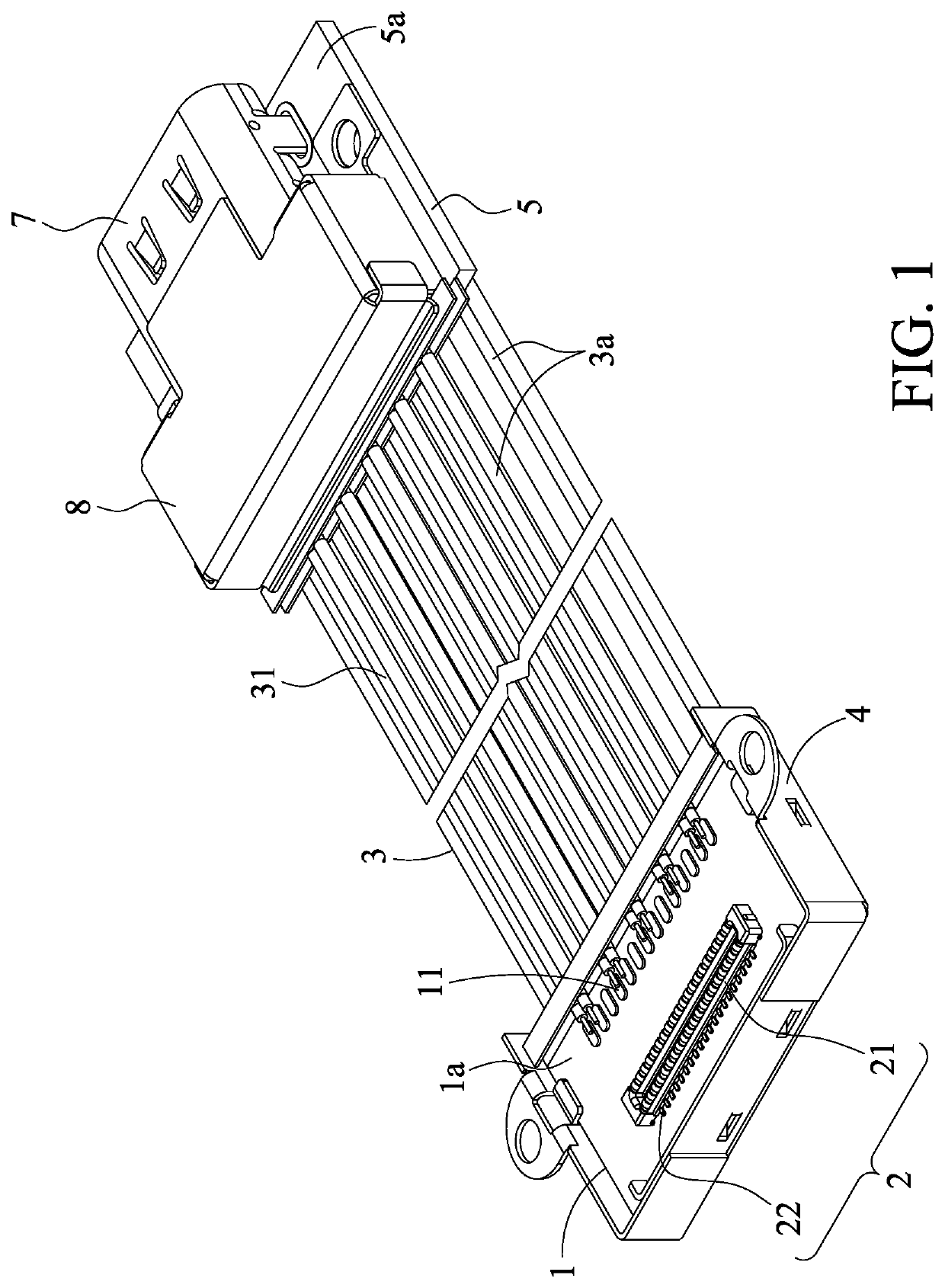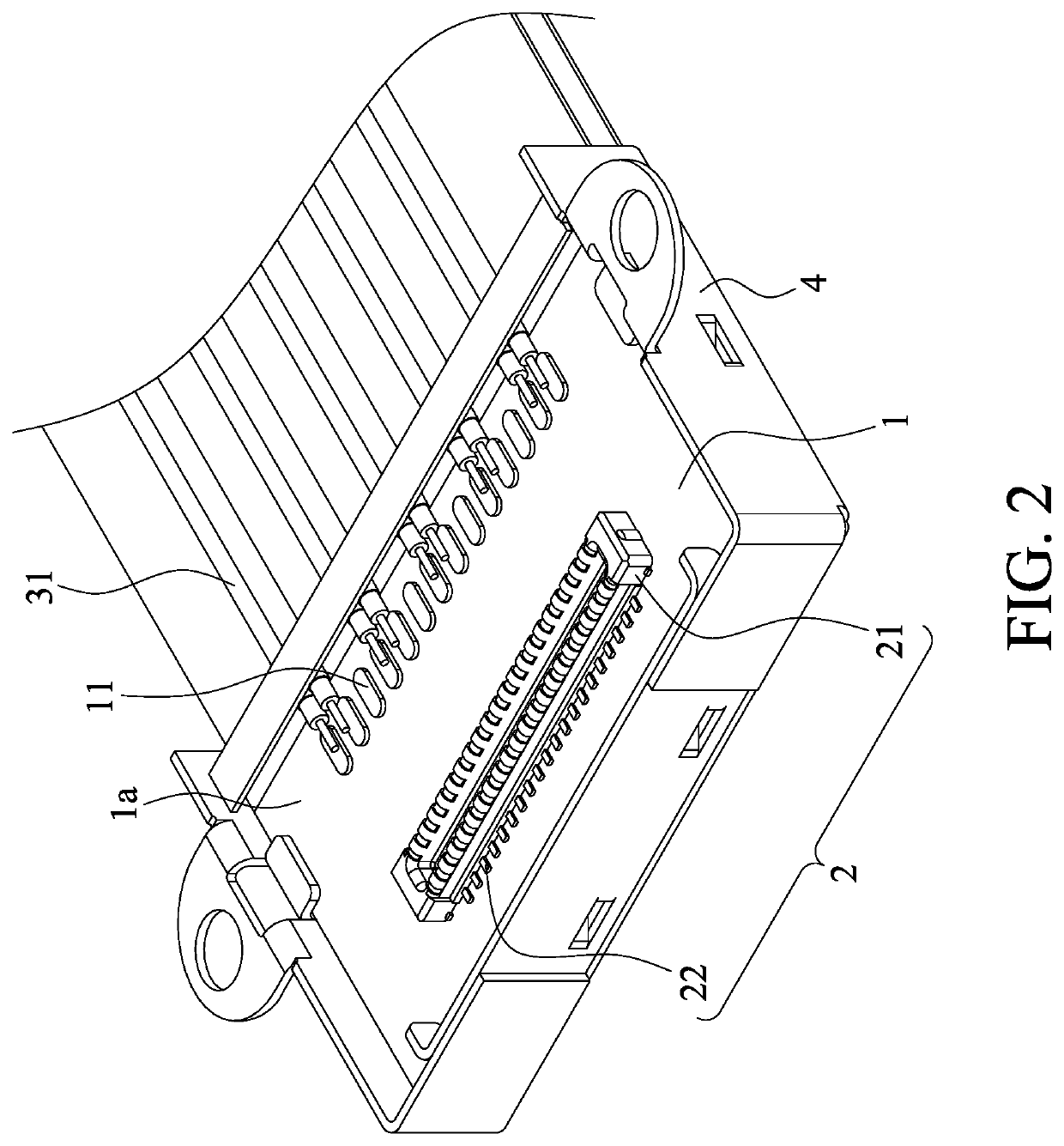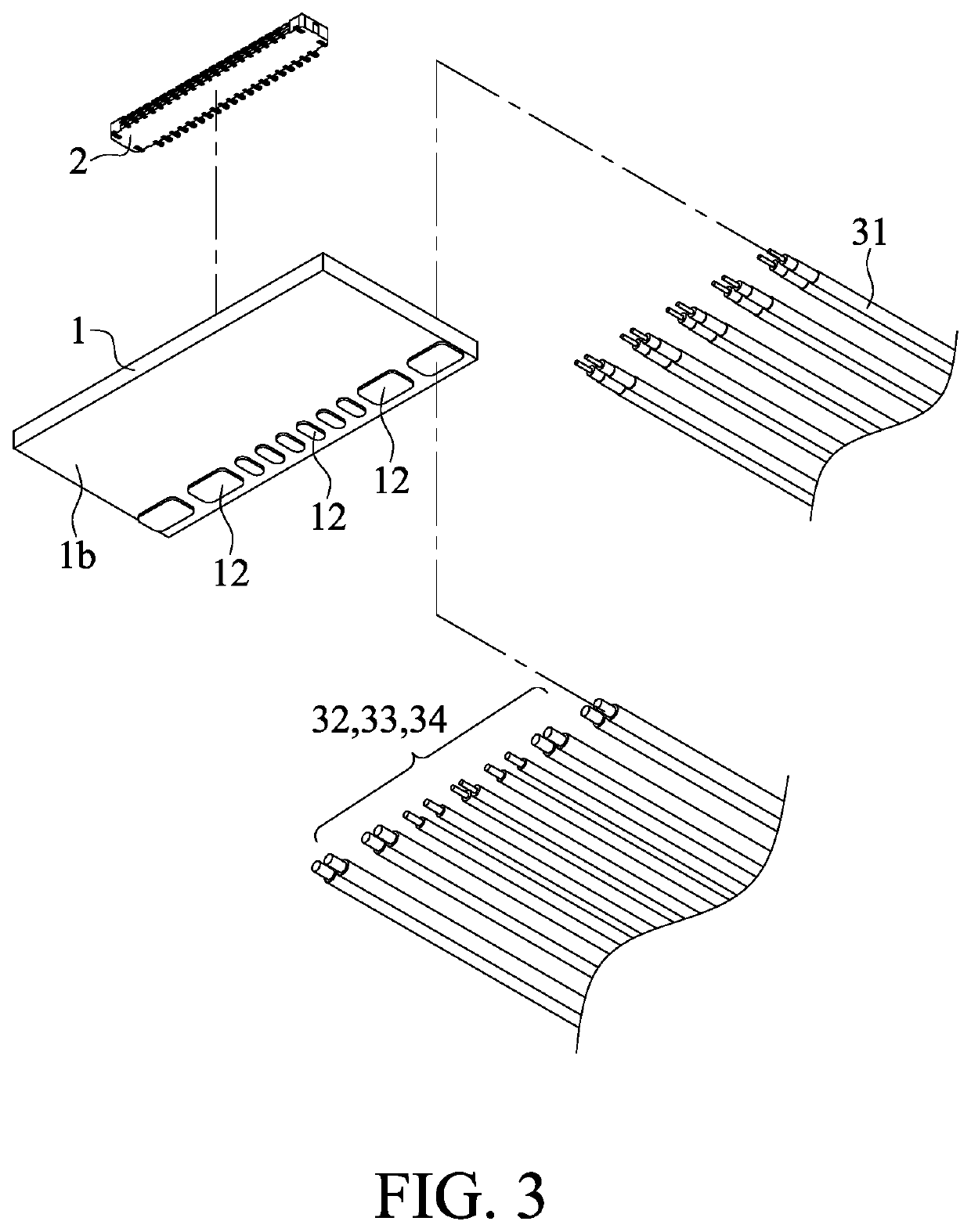Dual-row cable structure
a cable structure and cable technology, applied in the direction of coupling device connection, fixed connection, protective earth/shielding arrangement, etc., can solve the problems of small electronic device size, small wire structure, and relatively limited internal space of electronic devices, so as to reduce the width of the wire assembly in the structure, the effect of wide and spa
- Summary
- Abstract
- Description
- Claims
- Application Information
AI Technical Summary
Benefits of technology
Problems solved by technology
Method used
Image
Examples
Embodiment Construction
[0048]Please refer to FIGS. 1 to 6. A dual-row cable structure according to a first embodiment of the instant disclosure is illustrated. FIG. 1 illustrates a perspective view of a dual-row cable structure according to the first embodiment. FIG. 2 illustrates a perspective view of a first circuit board 1 of the dual-row cable structure of the first embodiment. FIG. 3 illustrates a partial exploded view showing the first circuit board 1, a board-to-board connector 2, and a wire assembly 3 of the dual-row cable structure of the first embodiment. FIG. 4 illustrates a perspective view of a second circuit board 5 of the dual-row cable structure of the first embodiment. FIG. 5 illustrates a partial front exploded view showing the second circuit board 5, a USB type-C connector 7, and the wire assembly 3 of the dual-row cable structure of the first embodiment. FIG. 6 illustrates a partial back exploded view showing the second circuit board 5, the USB-type C connector 7, and the wire assembly...
PUM
 Login to View More
Login to View More Abstract
Description
Claims
Application Information
 Login to View More
Login to View More - R&D
- Intellectual Property
- Life Sciences
- Materials
- Tech Scout
- Unparalleled Data Quality
- Higher Quality Content
- 60% Fewer Hallucinations
Browse by: Latest US Patents, China's latest patents, Technical Efficacy Thesaurus, Application Domain, Technology Topic, Popular Technical Reports.
© 2025 PatSnap. All rights reserved.Legal|Privacy policy|Modern Slavery Act Transparency Statement|Sitemap|About US| Contact US: help@patsnap.com



